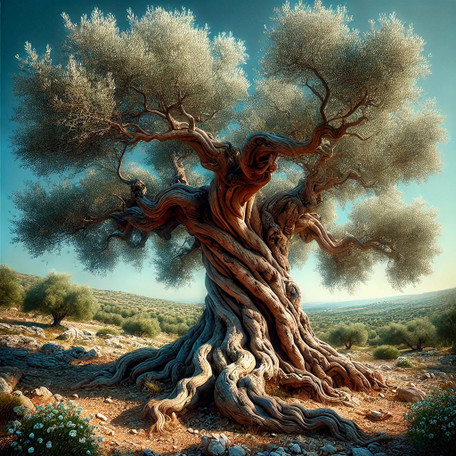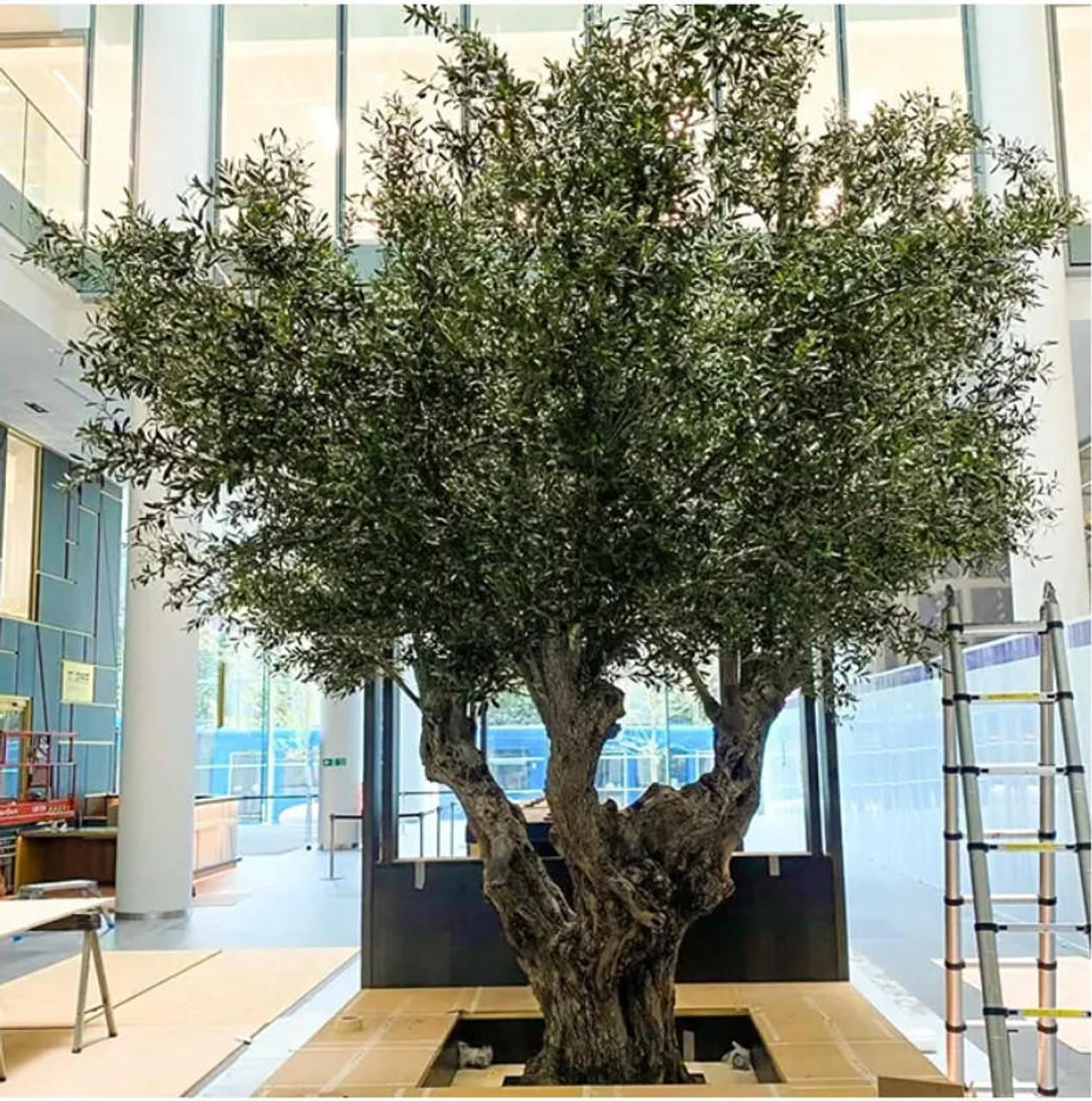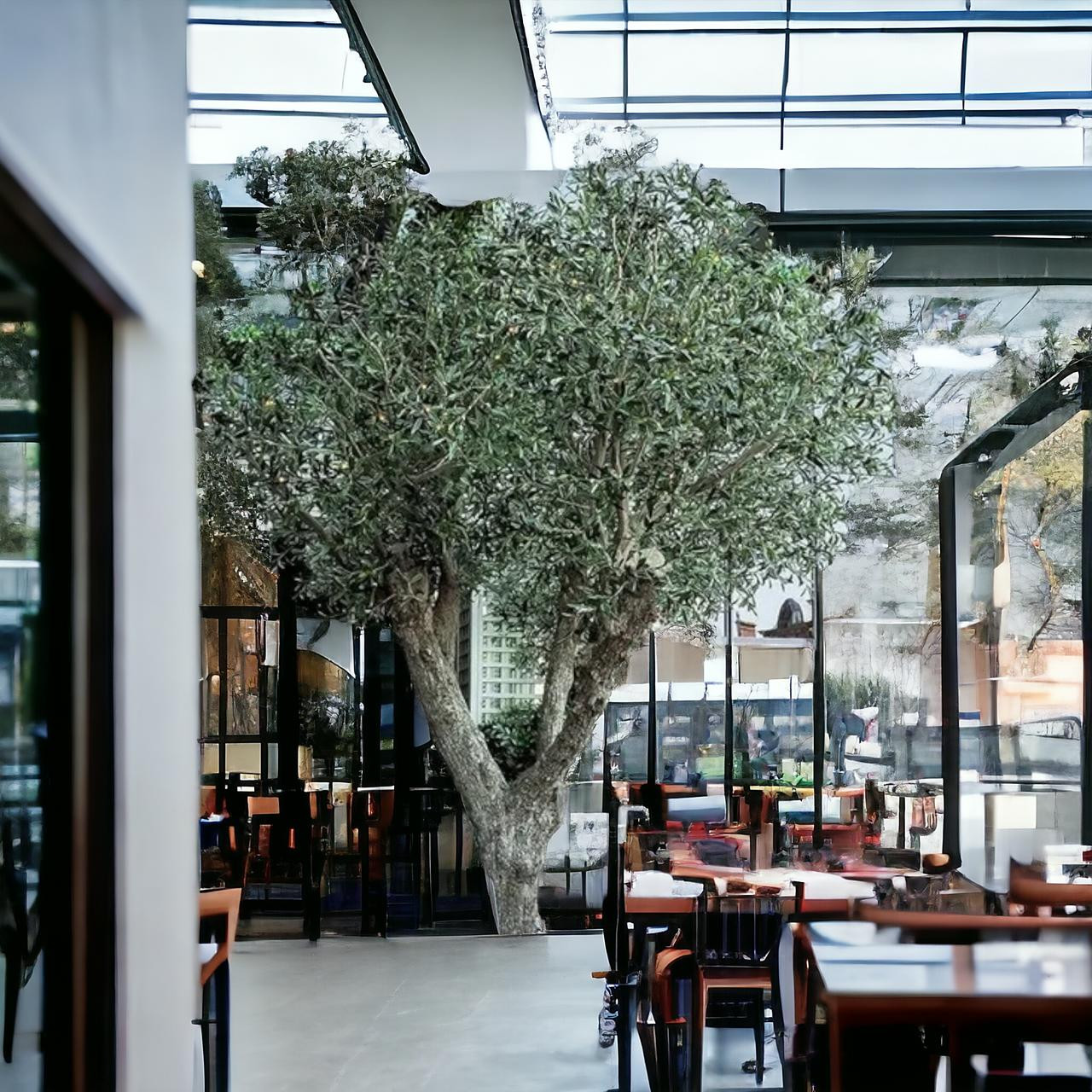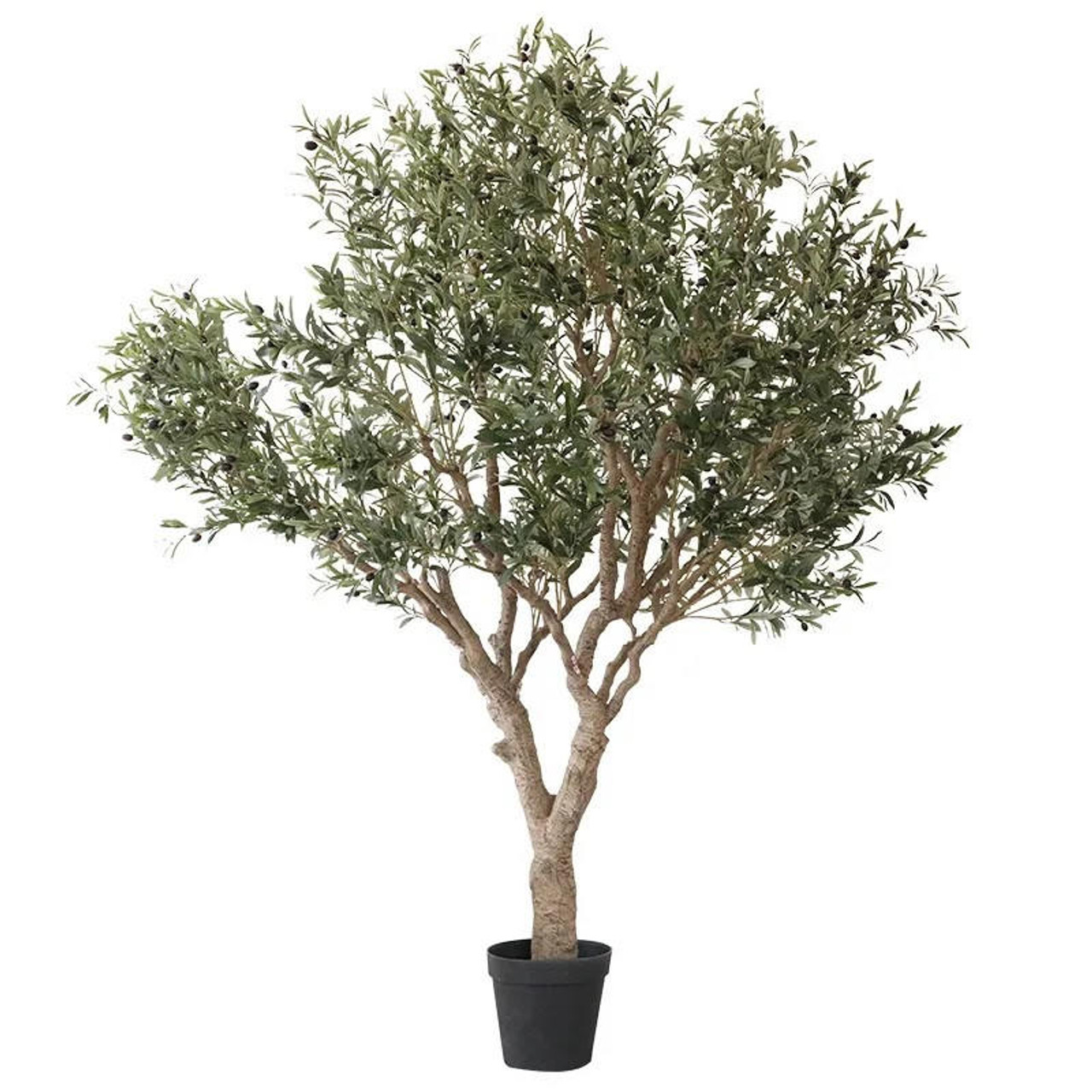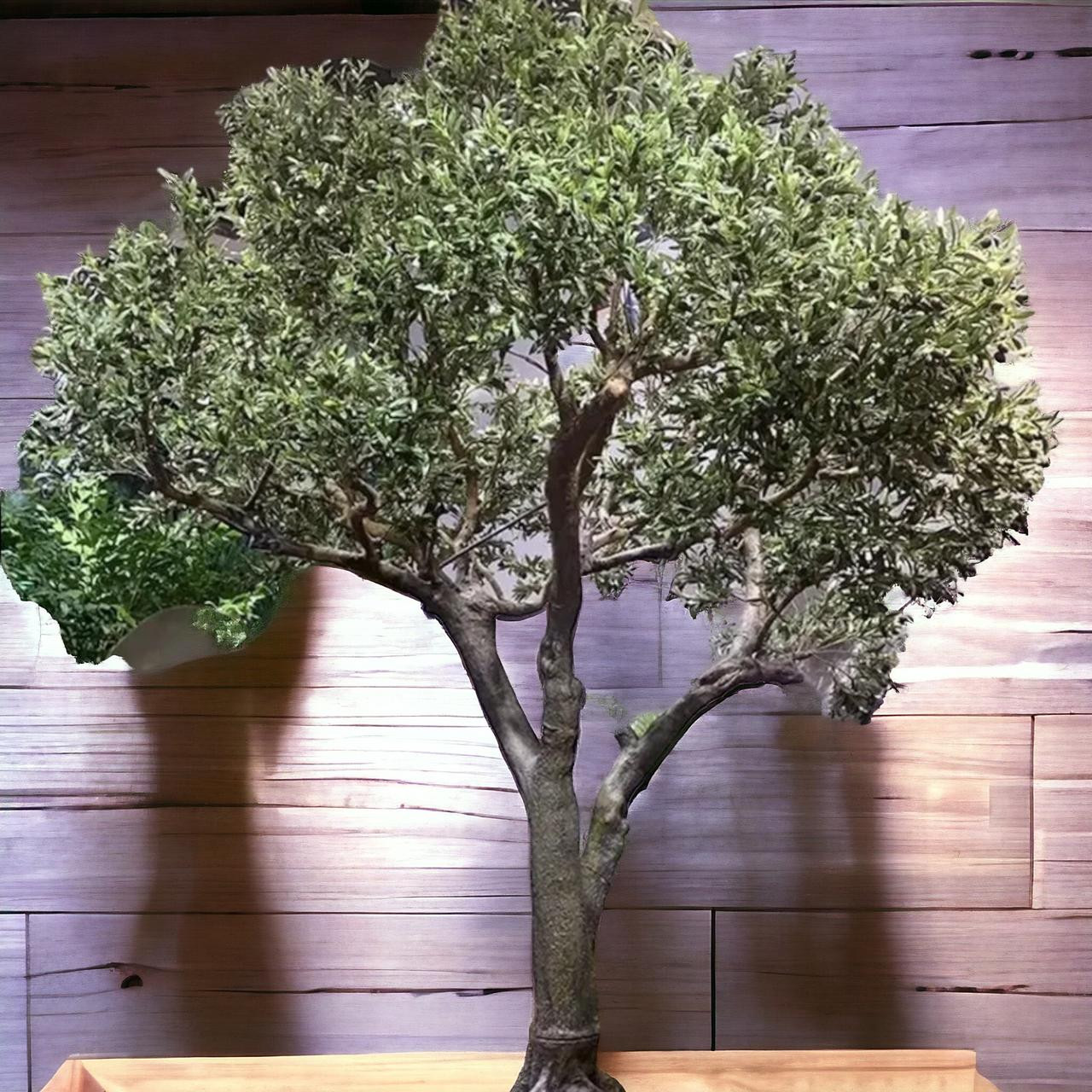The History and Cultural Significance of Olive Trees
Aug 10, 2024
The History and Cultural Significance of Olive Trees
Introduction
The olive tree, a symbol of peace, wisdom, and prosperity, holds a significant place in the history and culture of the Mediterranean region. This ancient tree, with its gnarled trunk and silvery-green leaves, has been cultivated for thousands of years and continues to be a vital part of the cultural and economic landscape of the Mediterranean. The history of the olive tree is deeply intertwined with the development of civilizations, the evolution of trade, and the establishment of religious and cultural traditions. This essay explores the ancient origins of olive trees and their cultural importance in Mediterranean societies.
Ancient Origins of Olive Trees
The olive tree, scientifically known as Olea europaea, is believed to have originated in the eastern Mediterranean region, possibly in what is now modern-day Turkey and Syria. Fossil evidence suggests that wild olive trees existed in this region over 20 million years ago, long before the advent of human civilization. However, it wasn't until around 6,000 years ago that humans began to domesticate the olive tree.
The domestication of the olive tree is thought to have occurred in the eastern Mediterranean, particularly in the Levant, where archaeological evidence points to the cultivation of olives as early as 4,000 BCE. The ancient city of Ebla, located in modern-day Syria, has yielded records of olive oil production and trade dating back to this period. From the Levant, olive cultivation spread to other parts of the Mediterranean, including Greece, Italy, and North Africa.
The spread of olive cultivation was closely linked to the growth of early civilizations in the Mediterranean. The ancient Egyptians, for example, imported olives and olive oil from the Levant and used them for culinary, medicinal, and religious purposes. Olive oil was a valuable commodity in ancient Egypt, used for anointing the bodies of pharaohs and in the preparation of food and cosmetics.
Olive Trees in Ancient Greece and Rome
Olive trees and their products played a central role in the culture and economy of ancient Greece. The Greeks believed that the olive tree was a gift from the goddess Athena, who was said to have planted the first olive tree on the Acropolis in Athens. The olive tree became a symbol of the city, and olive oil was used in religious rituals, athletic competitions, and daily life.
In ancient Greece, olive oil was not only a staple of the diet but also a key element in the economy. Olive oil was traded throughout the Mediterranean, and Athens became a major center of olive oil production and export. The wealth generated from the olive trade helped to finance the construction of the Parthenon and other great monuments of ancient Greece.
The cultural significance of the olive tree in ancient Greece extended to art and literature. The olive branch was a symbol of peace and victory, and it was used to crown the winners of the Olympic Games. The philosopher Aristotle wrote about the cultivation of olives in his works on agriculture, and the poet Homer described olive oil as "liquid gold" in the Iliad and the Odyssey.
The Romans, like the Greeks, valued the olive tree for its economic and cultural importance. Olive cultivation spread throughout the Roman Empire, from Spain to North Africa to the Middle East. The Romans developed advanced techniques for olive cultivation and oil production, including the use of presses and storage facilities.
Olive oil was an essential part of Roman life, used in cooking, lighting, medicine, and religious ceremonies. The Roman diet was heavily based on bread, wine, and olive oil, a combination that became known as the Mediterranean triad. Olive oil was also used to fuel lamps in homes and public buildings, and it was a key ingredient in the preparation of perfumes and ointments.
The Roman legal system recognized the importance of olive trees by granting special protections to olive groves. The destruction of olive trees was considered a serious crime, and the Roman poet Virgil praised the olive tree for its resilience and longevity in his Georgics.
Olive Trees in Religious and Symbolic Contexts
The olive tree has long held a sacred place in the religious and symbolic traditions of Mediterranean societies. In ancient Greek mythology, as mentioned earlier, the olive tree was associated with Athena, the goddess of wisdom and warfare. The olive branch became a symbol of peace and reconciliation, a tradition that continues to this day.
In Judaism, the olive tree is a symbol of peace, prosperity, and the relationship between God and the people of Israel. The olive branch appears in the story of Noah's Ark in the Bible, where a dove returns to the ark with an olive leaf in its beak, signaling the end of the flood and the restoration of life on earth. Olive oil was also used in the ancient Temple in Jerusalem for the lighting of the menorah, a practice that continues in the celebration of Hanukkah.
In Christianity, the olive tree and olive oil have deep spiritual significance. The Mount of Olives, located near Jerusalem, is the site of many important events in the life of Jesus Christ, including his ascension into heaven. Olive oil is used in the sacrament of anointing the sick and in the consecration of bishops and priests. The olive branch remains a symbol of peace, and it is often depicted in Christian art and iconography.
Islam also recognizes the importance of the olive tree. The Quran mentions the olive tree as a blessed tree and a symbol of God's creation. Olive oil is highly valued in Islamic tradition for its health benefits and its use in cooking and medicine. In some Islamic cultures, the olive tree is seen as a symbol of endurance and steadfastness, qualities that are admired in the face of adversity.
The Olive Tree in Mediterranean Culture and Economy
The cultural significance of the olive tree extends beyond its religious and symbolic meanings. In Mediterranean societies, the olive tree has been a source of sustenance, livelihood, and identity for millennia. The cultivation of olives and the production of olive oil have shaped the landscape, economy, and social structure of the region.
Olive groves are a defining feature of the Mediterranean landscape, from the terraced hills of Italy to the coastal plains of Spain and the rocky slopes of Greece. The care and cultivation of olive trees have been passed down through generations, with families and communities relying on olives as a primary source of income and food.
The process of harvesting olives and producing olive oil is deeply rooted in tradition. In many Mediterranean communities, the olive harvest is a time of celebration, marked by communal gatherings, feasts, and rituals. The production of olive oil is often a family affair, with multiple generations participating in the process.
Olive oil is central to the Mediterranean diet, which is recognized for its health benefits and has been designated as an Intangible Cultural Heritage of Humanity by UNESCO. The Mediterranean diet, rich in fruits, vegetables, whole grains, and olive oil, has been linked to lower rates of heart disease, obesity, and other chronic conditions.
Beyond its nutritional value, olive oil is also a key ingredient in Mediterranean cuisine, used in everything from salads and sauces to breads and desserts. The distinctive flavor of olive oil is a hallmark of Mediterranean cooking, and its versatility in the kitchen has made it a staple in households around the world.
The economic importance of olive oil production cannot be overstated. Today, the Mediterranean region accounts for more than 95% of the world's olive oil production, with Spain, Italy, and Greece being the top producers. The global demand for olive oil has grown significantly in recent years, driven by the popularity of the Mediterranean diet and the increasing recognition of olive oil's health benefits.
The olive oil industry is a major contributor to the economies of Mediterranean countries, providing employment for millions of people and supporting rural communities. Olive oil is also a significant export product, with Mediterranean countries supplying olive oil to markets around the world.
The Olive Tree as a Symbol of Resilience and Continuity
The olive tree is often seen as a symbol of resilience, continuity, and endurance. This perception is rooted in the tree's remarkable ability to survive in harsh conditions and its longevity, with some olive trees living for hundreds, even thousands, of years. The ancient olive trees that still stand in parts of the Mediterranean are a testament to the enduring connection between humans and this remarkable tree.
In many Mediterranean cultures, the olive tree is associated with the idea of rootedness and connection to the land. The cultivation of olive trees is often seen as a way of preserving tradition and maintaining a link to the past. The passing down of olive groves from one generation to the next is a symbol of continuity and the preservation of cultural heritage.
The resilience of the olive tree is also seen as a metaphor for the resilience of the people of the Mediterranean. Throughout history, the region has faced numerous challenges, including invasions, wars, and economic hardship. Yet, like the olive tree, the people of the Mediterranean have endured, maintaining their traditions, culture, and way of life.
Conclusion
The history and cultural significance of the olive tree in Mediterranean societies are profound and enduring. From its ancient origins in the eastern Mediterranean to its central role in the economies and cultures of Greece, Rome, and beyond, the olive tree has been a symbol of peace, prosperity, and continuity for thousands of years.
The olive tree's resilience, longevity, and ability to thrive in challenging conditions have made it a powerful symbol of endurance and connection to the land. Its products, particularly olive oil, have shaped the diets, economies, and cultural practices of the Mediterranean for millennia.
Today, the olive tree continues to be a vital part of the Mediterranean identity, linking the past with the present and providing a sense of continuity in a rapidly changing world. As we look to the future, the olive tree remains a powerful reminder of the enduring relationship between humans and the natural world, a relationship that has sustained civilizations for thousands of years and will continue to do so for generations to come.
Olive Trees in Italy: A Deep-Rooted Heritage
Olive trees hold a particularly special place in Italy's landscape, culture, and economy. They are deeply embedded in the country's history, symbolizing longevity, tradition, and a deep connection to the land. Italy is one of the world’s largest producers of olive oil, and the cultivation of olive trees spans the length and breadth of the country, from the northern regions to the sun-drenched south. This essay explores the significance of olive trees in Italy, tracing their historical roots, cultural importance, and their role in the Italian economy and cuisine.
Historical Roots of Olive Trees in Italy
The history of olive trees in Italy dates back thousands of years. While olive cultivation likely began in the eastern Mediterranean, it spread to Italy via the ancient Greeks and Phoenicians, who brought olive trees to the southern regions, particularly Sicily and Calabria. The Etruscans and later the Romans further developed olive cultivation, establishing large olive groves and refining the methods of olive oil production.
The Roman Empire played a crucial role in the spread of olive cultivation throughout the Italian peninsula and beyond. Olive oil became a staple of the Roman diet and was used in religious rituals, medicine, and for lighting. The Romans developed sophisticated techniques for pressing olives, which laid the foundation for modern olive oil production.
The importance of olive oil in Roman society is well documented. Olive oil was a significant part of the Roman economy, with large quantities being traded across the empire. The Roman legal system even included laws to protect olive groves, recognizing their economic and social value. The De Agricultura by Cato the Elder, one of the oldest surviving works on agriculture, provides detailed instructions on how to cultivate olives and produce olive oil, reflecting the significance of olives in Roman agriculture.
Regional Variations in Olive Cultivation
Italy's diverse geography and climate contribute to a wide variety of olive cultivars and olive oil types, each with its own distinct characteristics. Different regions in Italy have developed their own unique traditions and techniques for olive cultivation and oil production, which are closely tied to the local culture and cuisine.
- Tuscany: Tuscany is perhaps the most famous olive-growing region in Italy. The olive oils produced here are known for their fruity and peppery flavor, with a balance of bitterness and pungency. Tuscan olive oil is often used in the region's rustic cuisine, drizzled over bread, salads, and soups. The olive groves in Tuscany are a defining feature of the landscape, often found alongside vineyards and cypress trees. The most common olive varieties in Tuscany include Frantoio, Leccino, and Moraiolo.
- Puglia: The southern region of Puglia, or Apulia, is the largest producer of olive oil in Italy, accounting for around 40% of the country's total production. Puglia is home to millions of olive trees, some of which are centuries old. The olive oils from Puglia are typically robust and full-bodied, with a slightly bitter and spicy flavor. The region's hot, dry climate is ideal for olive cultivation, and the landscape is dotted with ancient olive trees, many with gnarled trunks and expansive canopies. The most common varieties in Puglia include Coratina, Ogliarola, and Leccino.
- Sicily: Sicily, the largest island in the Mediterranean, has a long history of olive cultivation, dating back to the ancient Greeks. Sicilian olive oils are often characterized by their medium to intense fruitiness, with notes of green tomato, artichoke, and herbs. The island's diverse microclimates allow for the cultivation of a wide range of olive varieties, including Nocellara del Belice, Biancolilla, and Cerasuola. Olive oil plays a central role in Sicilian cuisine, used in everything from pasta dishes to pastries.
- Liguria: In the northwestern region of Liguria, olive cultivation is concentrated in the terraced hills that rise from the Mediterranean coast. The olive oils from Liguria are typically mild and delicate, with a buttery texture and a slightly sweet flavor. Ligurian olive oil is often used in the region's famous pesto sauce and to dress vegetables and seafood. The most common variety in Liguria is the Taggiasca olive, which is also prized as a table olive.
- Umbria: The central region of Umbria, known as the "green heart of Italy," produces some of the country's most renowned olive oils. Umbrian olive oils are typically robust, with a strong grassy flavor and notes of artichoke and almond. The region's hilly terrain and cool climate contribute to the high quality of the olives. The most common varieties in Umbria include Frantoio, Leccino, and Moraiolo.
Cultural Significance of Olive Trees in Italy
Olive trees are not only an important agricultural crop in Italy but also a powerful cultural symbol. The olive tree represents resilience, peace, and the enduring connection between the Italian people and their land. This symbolism is reflected in Italian art, literature, and folklore.
In many parts of Italy, olive trees are seen as part of the family heritage, with groves being passed down from generation to generation. The care and cultivation of olive trees are often a labor of love, involving traditional methods that have been handed down through the centuries. In some regions, the olive harvest is still conducted by hand, a practice that fosters a deep connection between the farmer and the land.
The olive tree also features prominently in Italian religious traditions. Olive oil is used in Catholic rituals, such as the anointing of the sick and in the preparation of holy chrism, a consecrated oil used in baptisms and confirmations. During Easter, many Italian churches bless olive branches, which are then distributed to the faithful as symbols of peace.
The olive tree's association with peace is also evident in Italian history. After World War II, the Italian government promoted the planting of olive trees as a symbol of the country's recovery and a commitment to peace. This initiative helped to restore damaged landscapes and reinforce the olive tree's role as a symbol of endurance and renewal.
Olive Oil in Italian Cuisine
Olive oil is the cornerstone of Italian cuisine, and its quality is of utmost importance. Italian cooking emphasizes the use of high-quality ingredients, and olive oil is no exception. Extra virgin olive oil, made from the first cold pressing of the olives, is considered the finest and is used both as a cooking oil and as a finishing oil to enhance the flavor of dishes.
In Italy, olive oil is used in a wide variety of dishes, from appetizers to desserts. It is often drizzled over bruschetta, used to dress salads, and incorporated into pasta sauces. In some regions, olive oil is even used in baking, replacing butter in cakes and pastries.
The flavor profile of olive oil can vary significantly depending on the region and the variety of olives used. This diversity allows for a wide range of culinary applications. For example, the robust and peppery olive oils of Tuscany are ideal for drizzling over grilled meats and vegetables, while the mild and fruity oils of Liguria are perfect for delicate dishes like fish and pesto.
Olive oil is also prized for its health benefits, which are an integral part of the Mediterranean diet. Rich in monounsaturated fats and antioxidants, olive oil has been linked to a lower risk of heart disease, reduced inflammation, and improved overall health. This health aspect, combined with its versatility and flavor, makes olive oil a staple in Italian kitchens.
Economic Importance of Olive Cultivation in Italy
The olive oil industry is a vital part of Italy's economy, particularly in rural areas where olive cultivation provides a primary source of income. Italy is one of the world's largest producers and exporters of olive oil, with the industry supporting thousands of jobs in agriculture, processing, and marketing.
The production of high-quality olive oil is a matter of national pride in Italy, and there are strict regulations in place to ensure the authenticity and quality of Italian olive oil. The Denominazione di Origine Protetta (DOP) certification, for example, guarantees that the olive oil comes from a specific region and meets stringent production standards. This certification helps protect the reputation of Italian olive oil in international markets and ensures that consumers receive a product of the highest quality.
However, the Italian olive oil industry also faces challenges, including competition from other olive-producing countries, the threat of climate change, and issues related to olive tree diseases, such as Xylella fastidiosa, a bacterium that has devastated olive groves in parts of southern Italy. Efforts are underway to combat these challenges through research, innovation, and sustainable farming practices.
Conclusion
Olive trees are much more than just a crop in Italy; they are a symbol of the country’s rich cultural heritage, its connection to the land, and its enduring traditions. From the ancient groves of Puglia to the terraced hills of Liguria, olive trees have shaped the Italian landscape and economy for millennia. The olive tree’s cultural and economic importance in Italy is reflected in the country’s cuisine, religious practices, and artistic expressions.
Today, the olive tree continues to be a vital part of Italy’s identity, linking past generations with the present and future. As Italy faces new challenges, the resilience of the olive tree serves as a powerful reminder of the enduring connection between the Italian people and their land—a connection that has sustained them for thousands of years and will continue to do so for generations to come.

